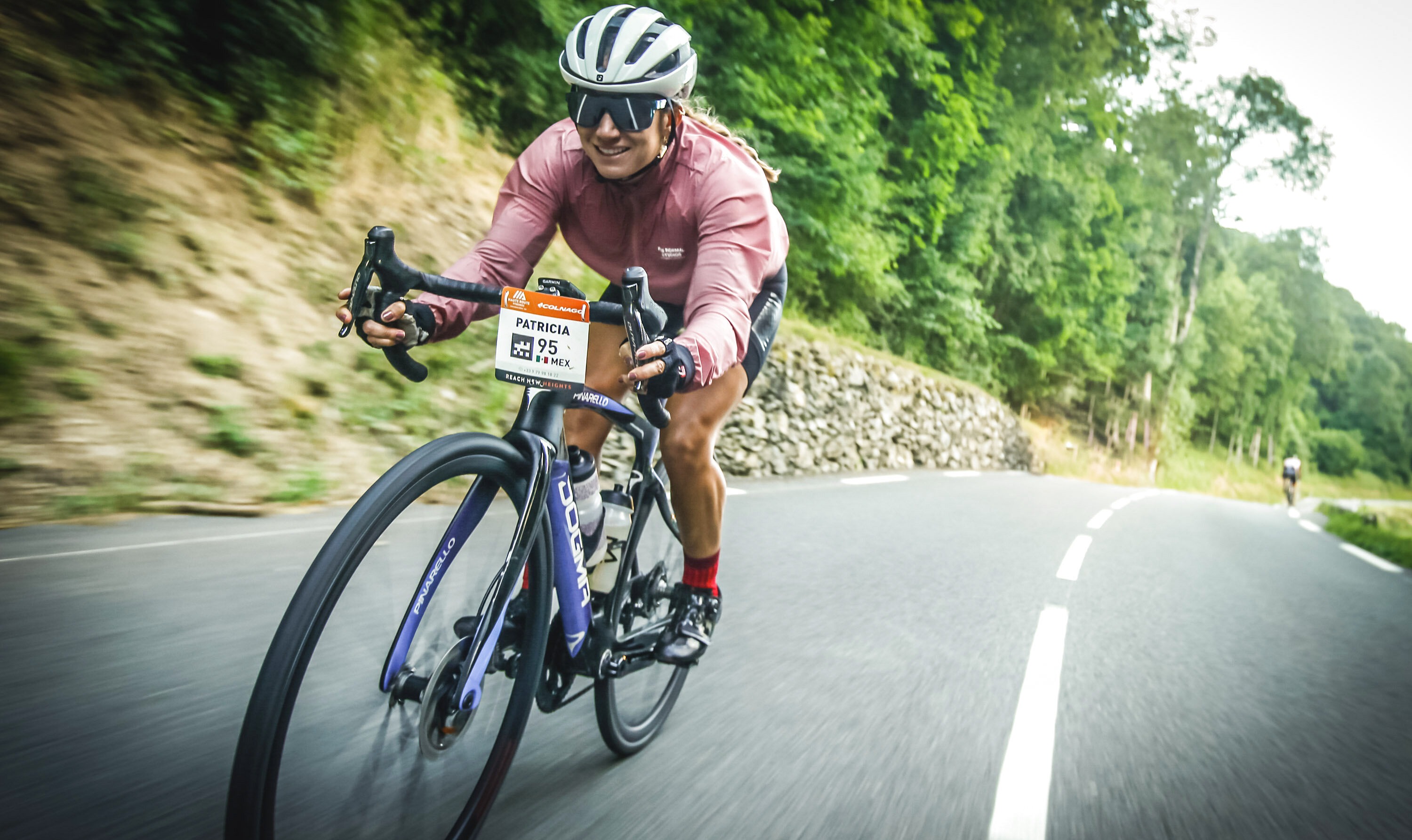Descending mountain cols can often be tricky. We discuss the key techniques needed to descend cols on a road bike.
Braking techniques for descending cols
For braking to be effective and safe, it is necessary to respect the following principle: before approaching a turn, you must reduce your speed by using mainly the front brake (70%) without forgetting the back one (30%). As you brake, the weight of your body is transferred towards the front, which increases the adherence of the front tyre which can therefore support harder braking without skidding.
To descend a col well, it is also best to brake decisively and then release the brakes gently. Try to avoid soft and continuous braking which will quickly overheat your rims or brake discs, which will reduce the braking capacity of the bike. Also, with rim brakes, overheating can cause a puncture.
"You must not allow your muscles to cool down or you will not be able to perform as well on the climb that follows the descent."
The attitude to adopt on a descent
Descending a col can take a long time. During a ride that includes several cols, which is the case for Haute Route stages, remaining too passive will let your muscles cool down too much. If this happens, the next climb will be difficult because the legs will have to produce a substantial effort all of a sudden. It is therefore recommended to spin your legs, even without too much effort, and to accelerate at the exit of each bend.
If you are afraid of descending cols on a road bike and you are too nervous, start by training on easy descents that are not too long. This will give you confidence in yourself and your bike. Then you can go on to test steeper and more technical descents.
Controlling your trajectory on the road
In order to exit the bends whilst keeping up a good speed, it is necessary to negotiate it by taking the bend wide and then taking the “racing line”, i.e. the interior of the turn in the middle of the bend and then leave wide to keep up your speed. It is very important to look as far ahead as possible in order to pick the best trajectory. Moreover, it is by looking far ahead that you can best avoid potholes or objects that might be on the road.
Adapt to the weather
Of course, when you have to descend on wet roads, the braking distance will be longer for bikes with rim brakes because of the layer of water on the rims. Furthermore, the grip of your tires will be reduced and the turns must therefore be taken with less speed than in dry conditions.
Descending cols on a Haute Route event
In professional races, the roads are closed and the rider can use both lanes without any fear of oncoming vehicles. This is not the case on an Haute Route event. So for the safety of the cyclists, some technical and potentially dangerous descents are not timed. In all cases, the safety rules and regulations must be respected: keep to the right lane at all times and maintain a safe distance of several meters from the other cyclists in your group. Also do not forget that the risks taken in a descent are really high compared to the few seconds you could possibly make up.
Any cyclist who is passionate about climbing and mountain cols is confronted with multiple descents during their season. With these tips, focus on the fun, the safety and enjoy them as much as the climbs!
And while this article brings together some important tips, there are others, such as managing tire pressure. To expand your knowledge on the subject, feel free to check out this video or this article from the 2019 Grimpeur Magazine.


.jpg?width=2048&name=HRETAPE3%20(17).jpg)





